If you’ve never heard of Potica, you’re not in the minority. Unless you have roots in Slovakia or Yugoslavia you may never have heard mention of it.
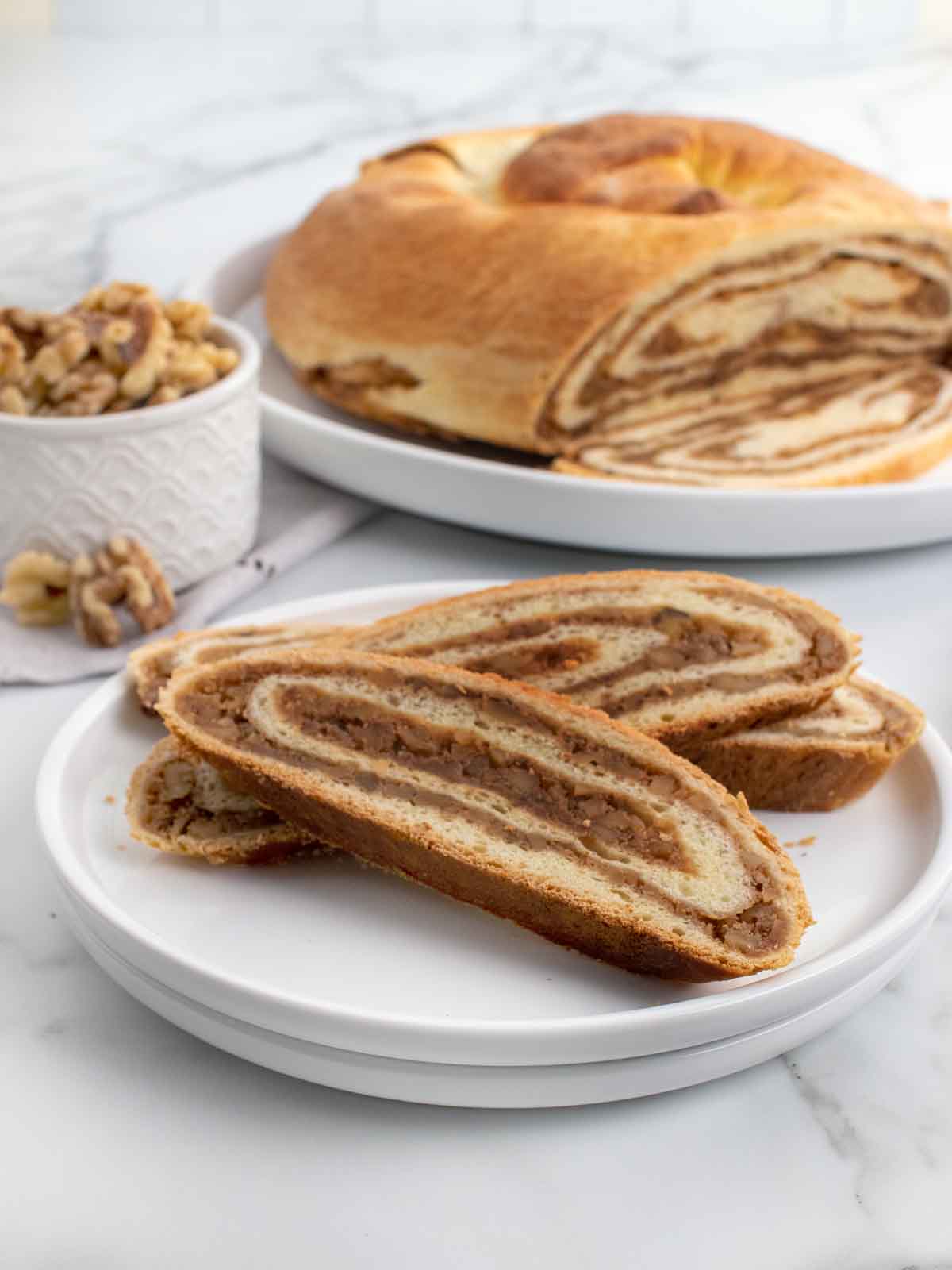
But Potica is definitely a delicious and easy-to-make taste of Eastern Europe. On one of my trips to Europe, I was fortunate enough to sample this pastry onboard a Viking River Cruise.
The chef was kind enough to let me watch the preparation and I’m happy to be able to share it with all of you.
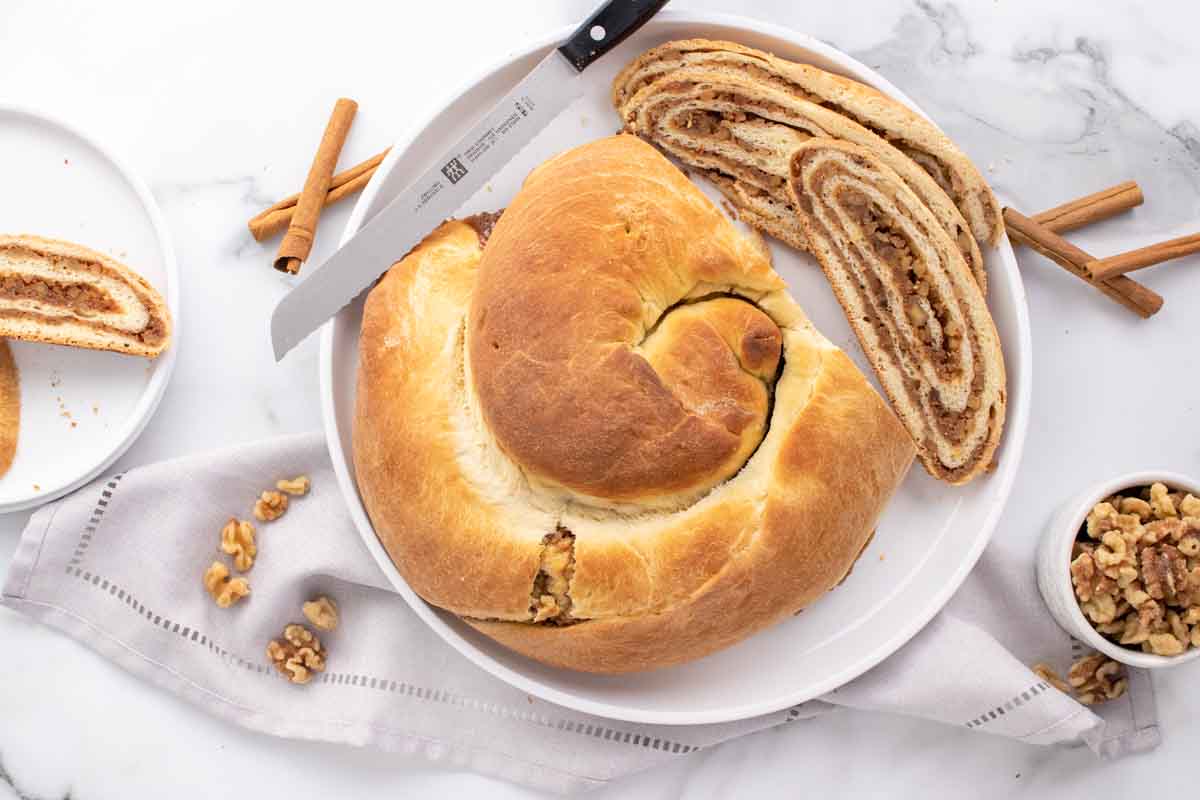
Potica (pronounced po-teet-sah), is a Slovenian (Croatian / Yugoslavian) nut roll that is traditionally made for Easter and Christmas. But it’s a wonderful treat, any time of the year.
What Ingredients do I need to make Potica?
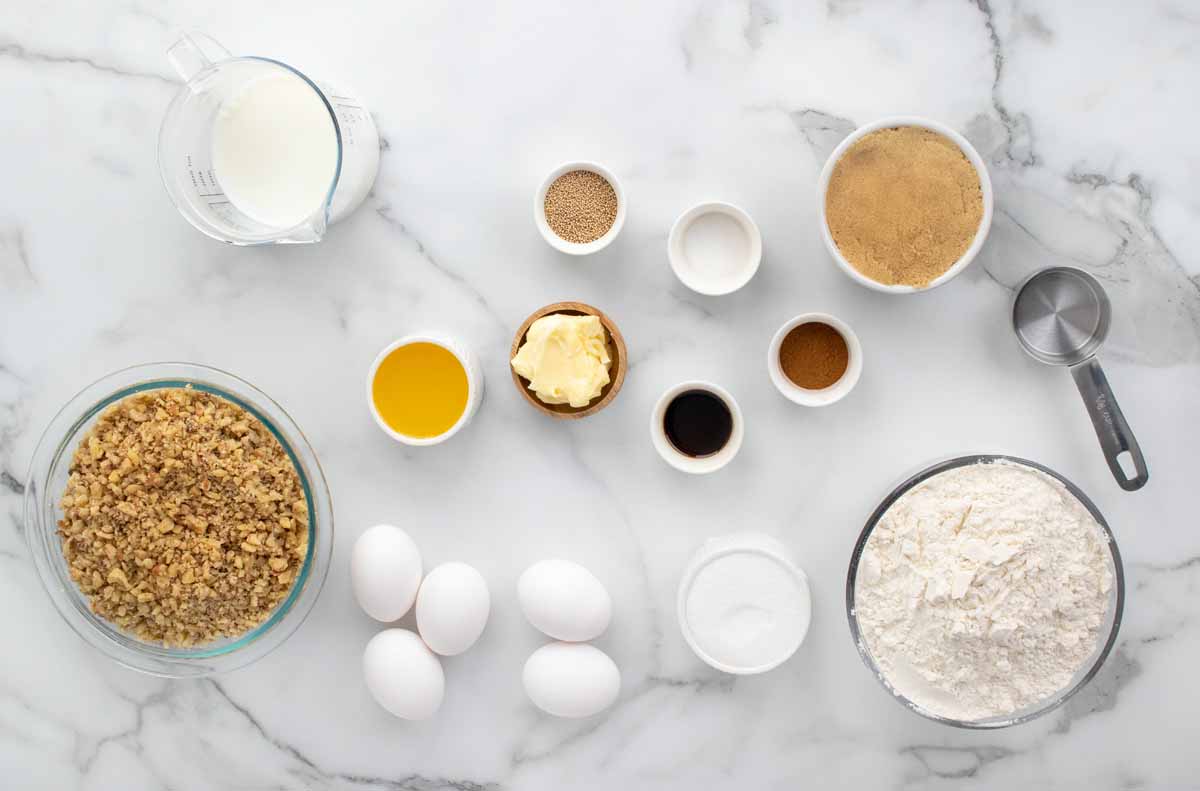
Let’s start by gathering the ingredients we need to make Potica. In Chef Speak this is called the “Mise en Place” which translates to “Everything in its Place”.
Not only does setting your ingredients up ahead of time speed up the cooking process, it also helps ensure you have everything you need to make the dish.
How do I make pastry dough for Potica?
Start by making the dough.
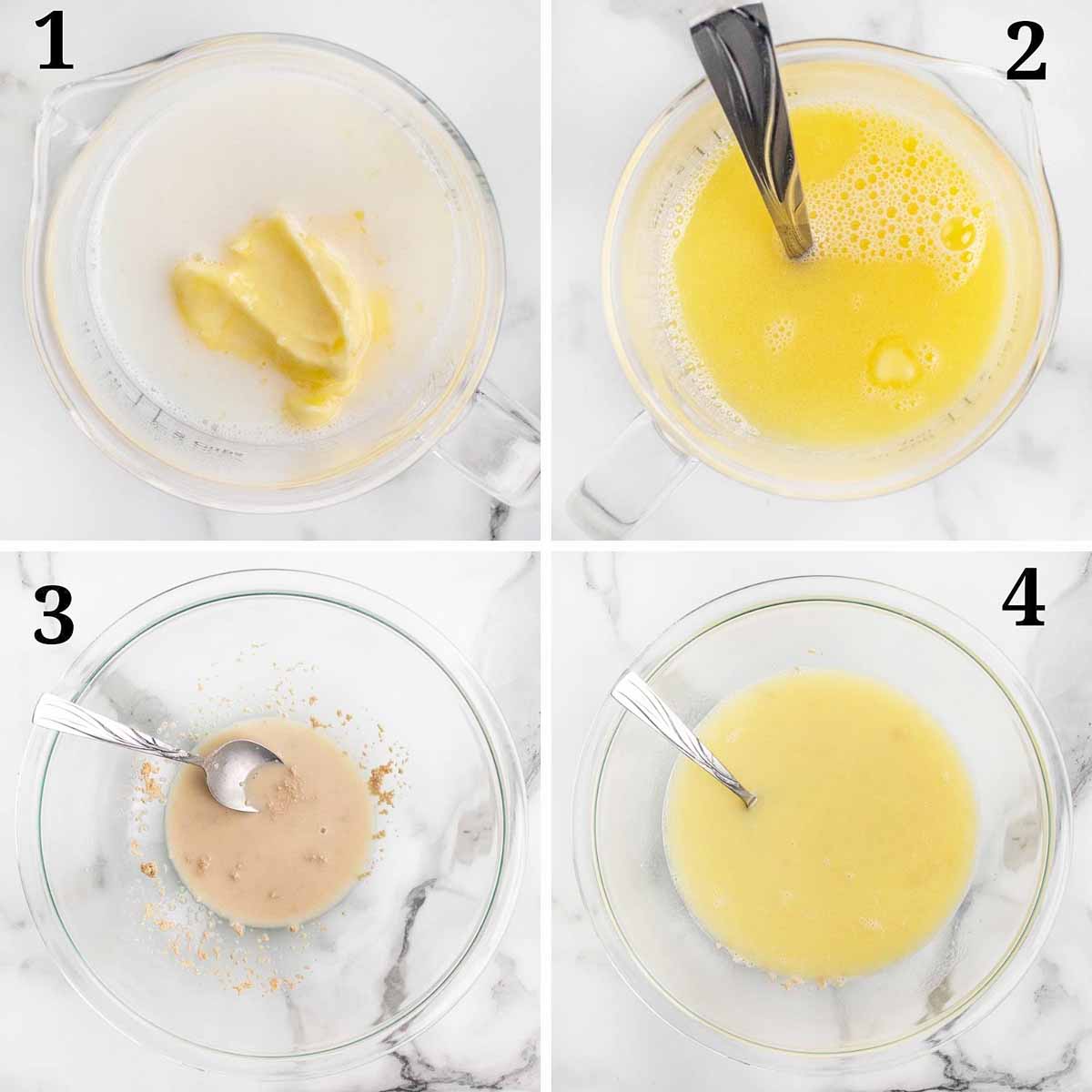
- Stir the sugar, salt and ¼ cup butter into hot milk.
- Cool to lukewarm. (a drop on your wrist won’t feel hot)
- Sprinkle the yeast over warm water in a large bowl. Stir to dissolve.
- Stir in lukewarm milk mixture to the yeast.
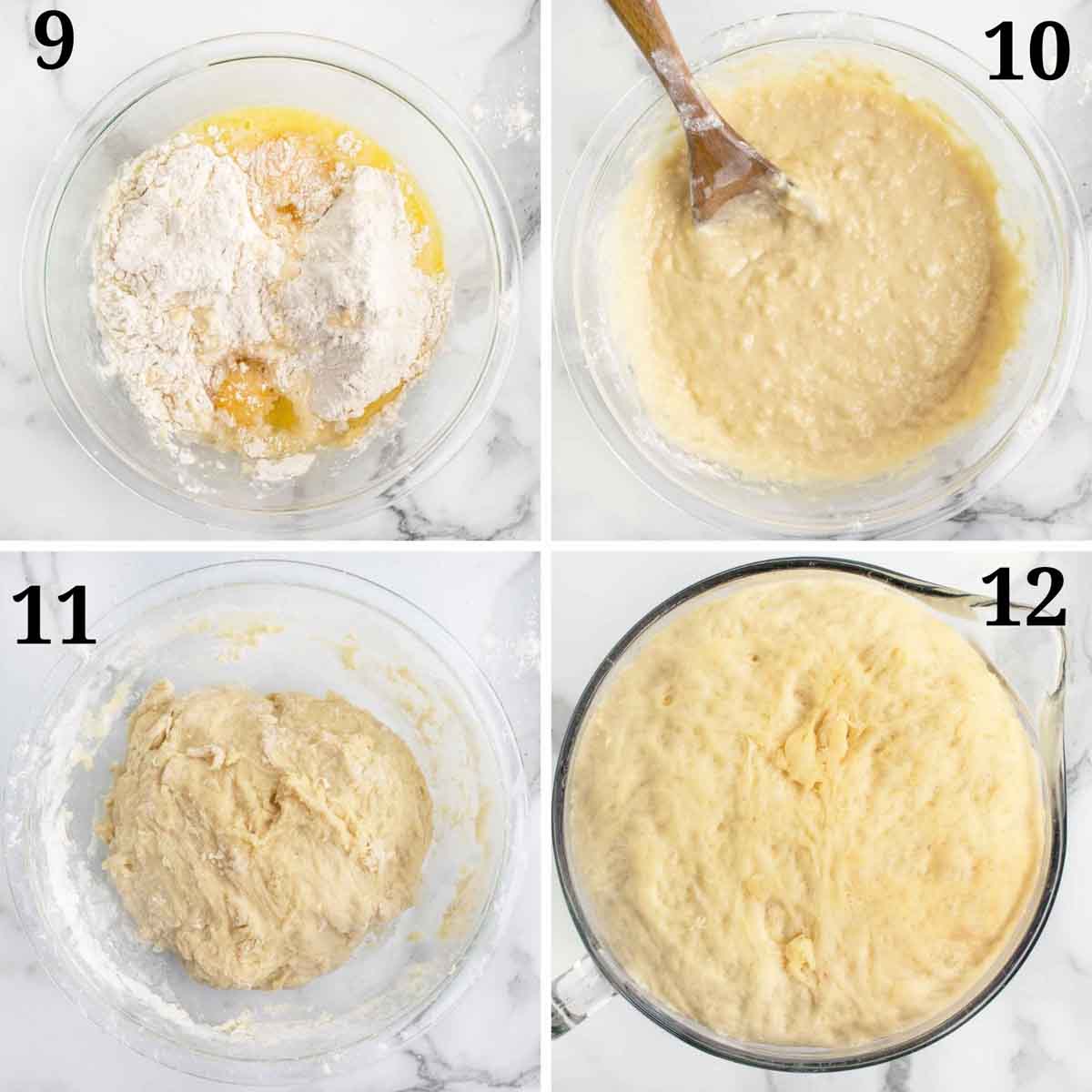
- Add 2 eggs and 2.5 cups flour to the yeast mixture. Use a wooden spoon to mix in the ingredients until smooth.
- Gradually add in remaining 2 cups flour; knead by hand until the dough is stiff enough to leave side of bowl.
- Place the dough in a lightly greased large bowl. Turn dough over – greased side up – and cover with a towel.
- Let rise in warm place (85F) free from drafts, until doubled in size – about an hour.
How do I make the walnut filling?
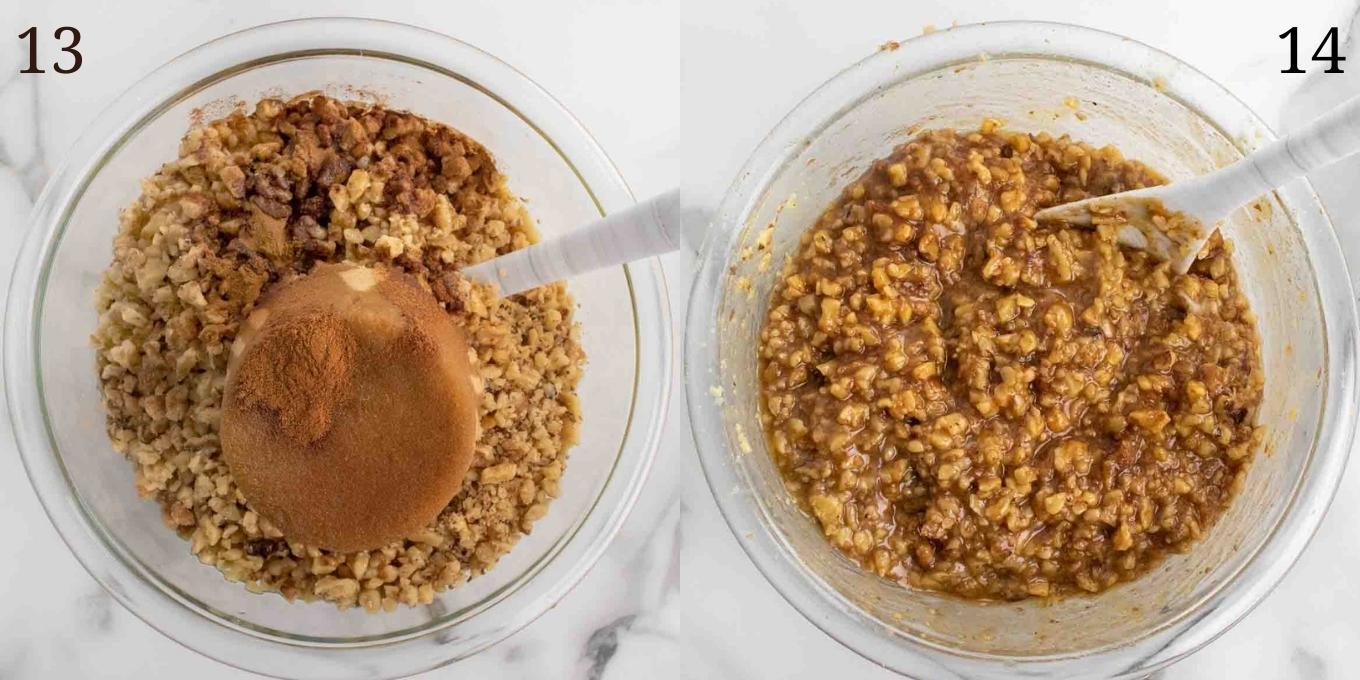
- In a medium bowl beat the eggs slightly. Add the walnuts, brown sugar, ⅓ cup of the melted butter, cinnamon and vanilla.
- Stir until well blended and set aside until needed.
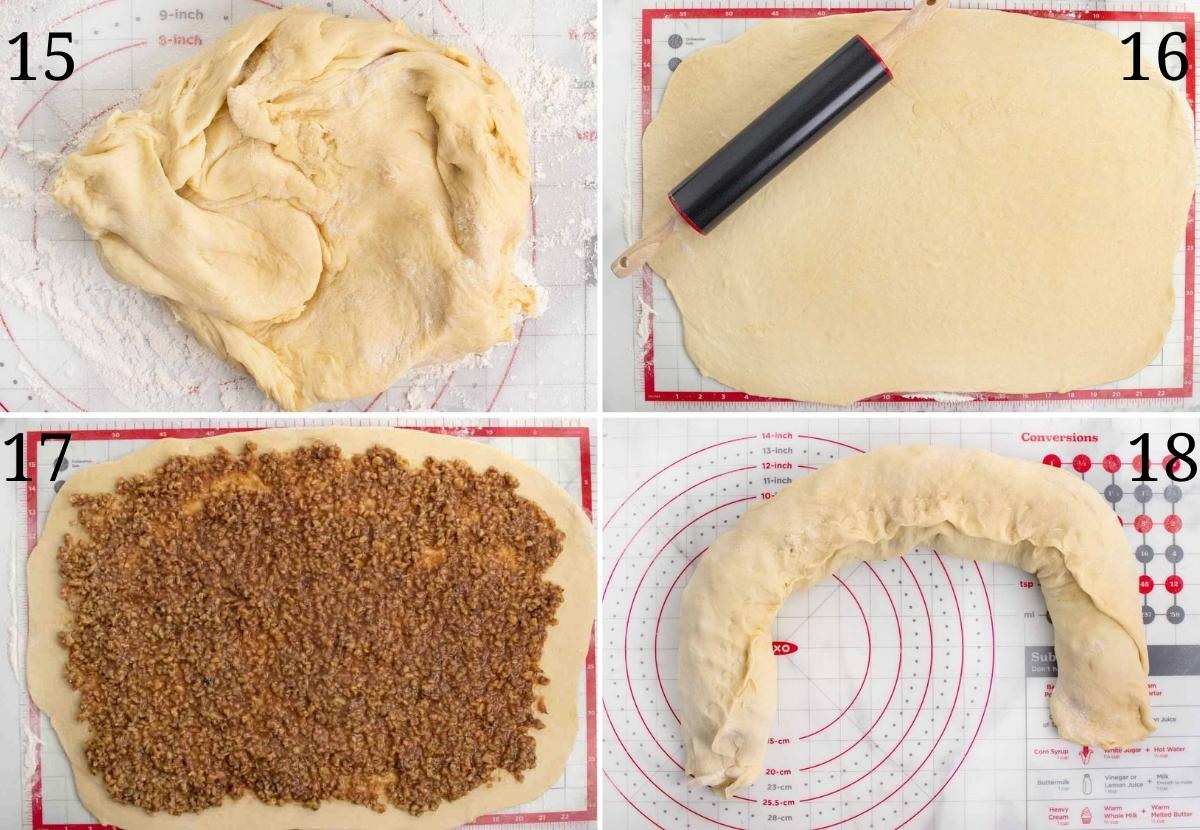
- When the dough has risen, punch it down and turn the dough out on a lightly floured surface. Cover the dough with a bowl and let rest for 10 minutes.
- Roll the dough out to a 30×20” rectangle.
- Spread the walnut filling on top of the dough, leaving 1 inch of the edge uncovered around the entire dough.
- Starting from the wide side, begin rolling up the dough tightly (jellyroll style). Seal by pinching edges of dough with fingers.
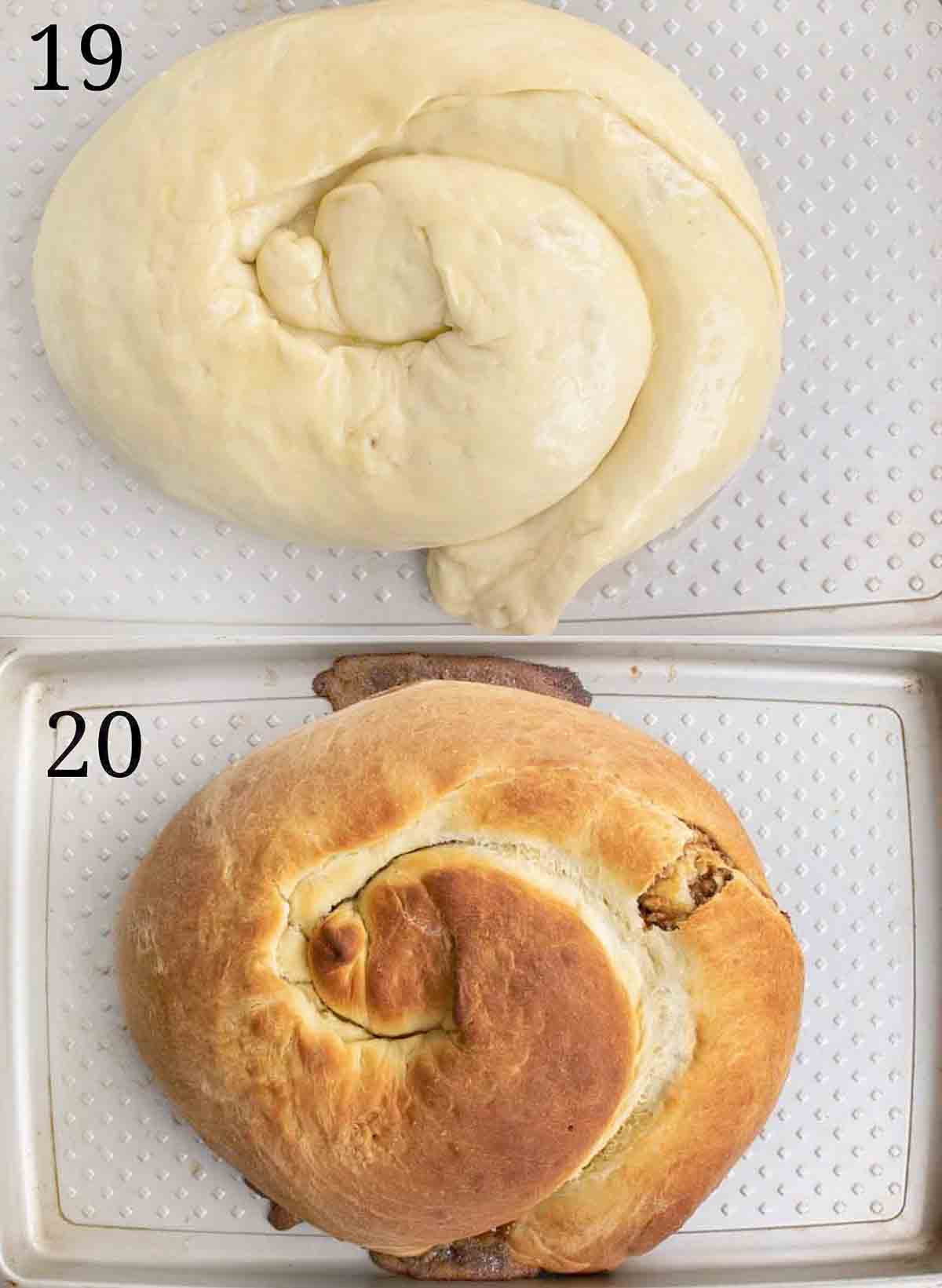
- On a large greased cookie sheet or seasoned baking stone, form the roll into a large coil.
- Let rise in a warm place (85F), covered with a towel, for one hour.
- Preheat oven to 350F.
- Brush the potica with 2 Tablespoons of melted butter.
- Bake 35-40 minutes until golden.
- Cool on wire rack before cutting.
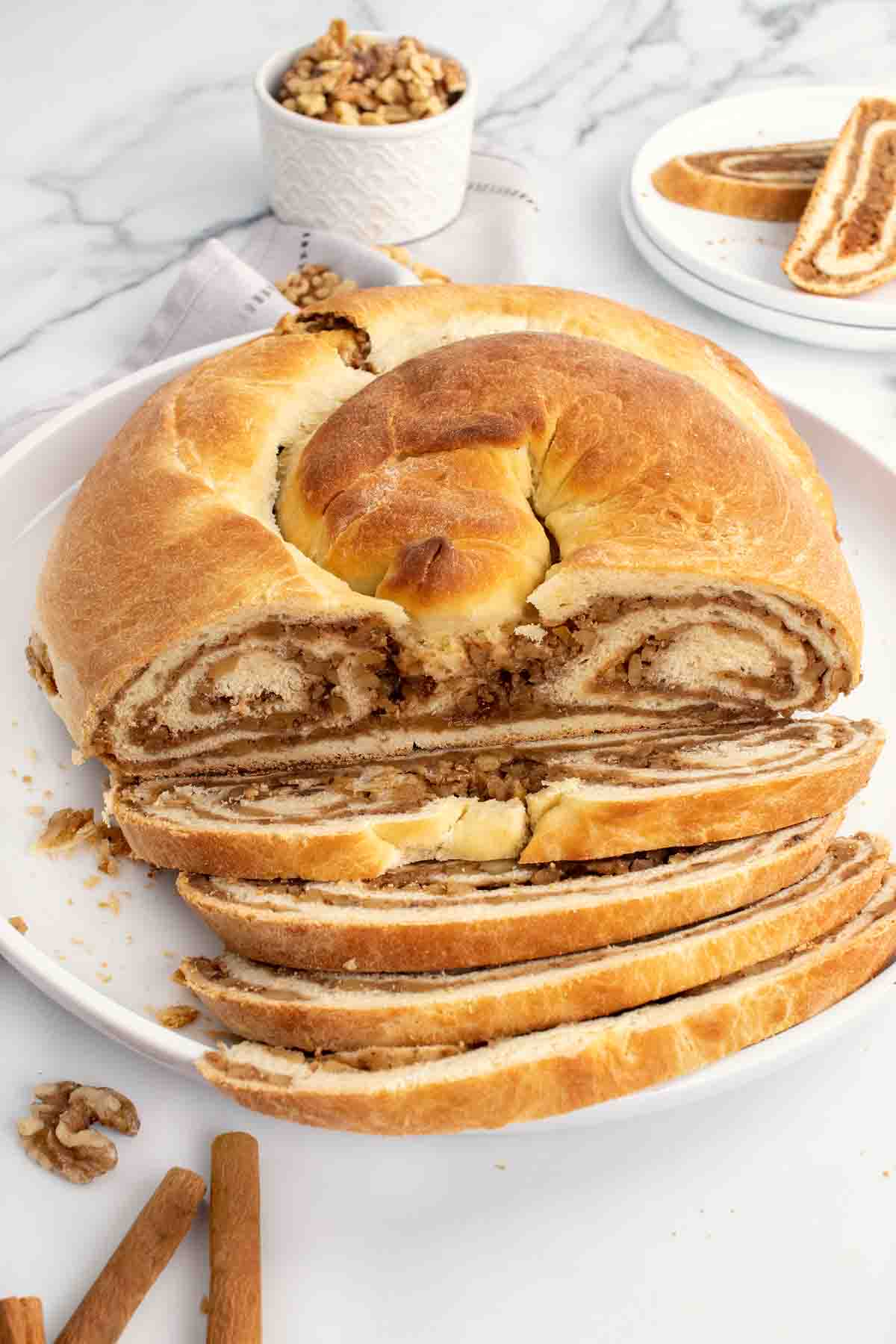
Recipe FAQ’s
You can make this recipe and cut the dough into 2 or 4 equal parts and make smaller loaves. They would be the perfect size for a housewarming or holiday gift.
The most popular filling for potica is made with walnuts which is what this recipe uses. Other popular fillings include hazelnut, chocolate, Nutella, poppy seed, cottage cheese, and honey.
you can also make savory versions of Potica using egg with tarragon, or chive. But my favorite version actually uses bacon with egg.
Depending upon the region of Eastern Europe potica is also known as povitica, povtica and potvitsa.
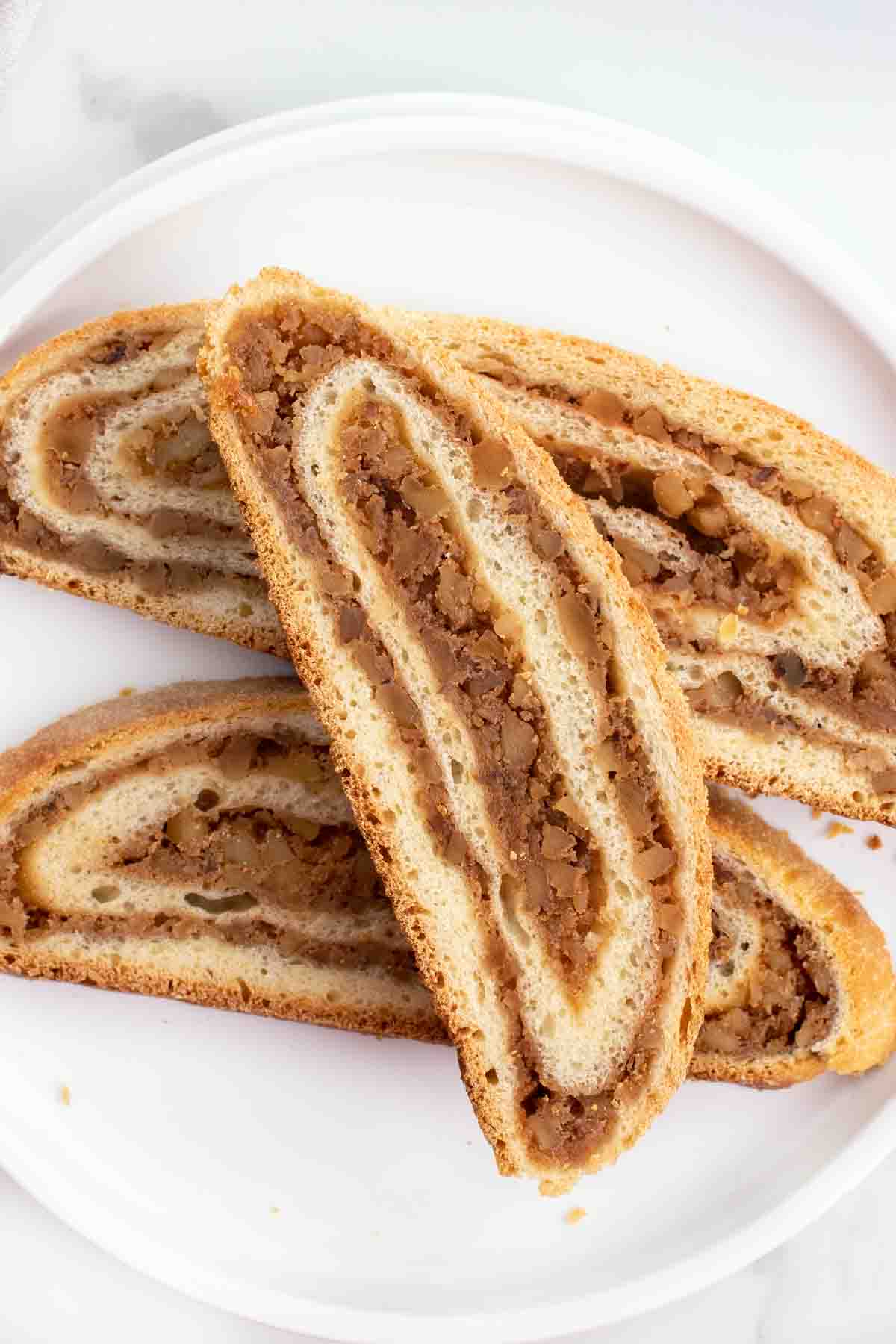
Anyway you slice it, you’re going to love this rich, flavorful pastry. Why not make a new family tradition with this Eastern European Pastry? You don’t have to be from that part of the world to enjoy the deliciousness of Potica.

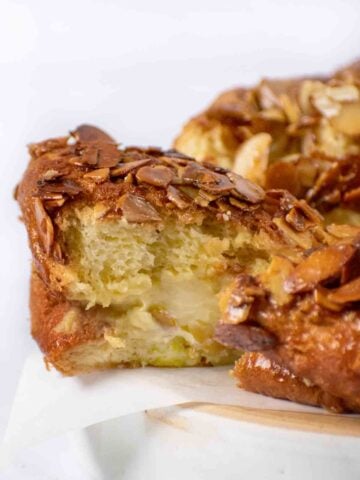
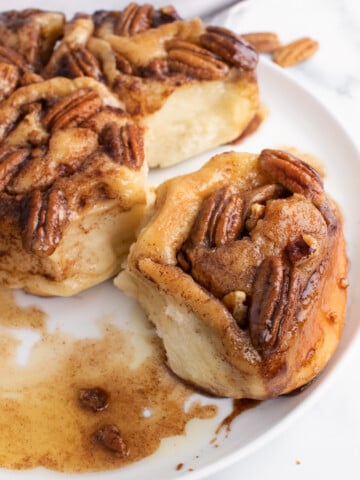
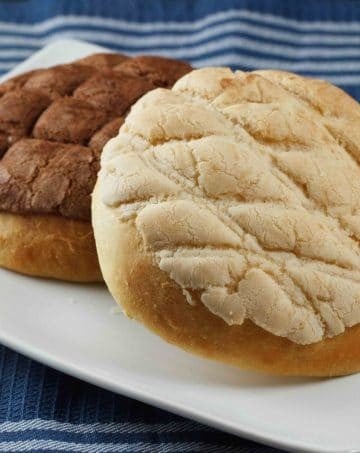
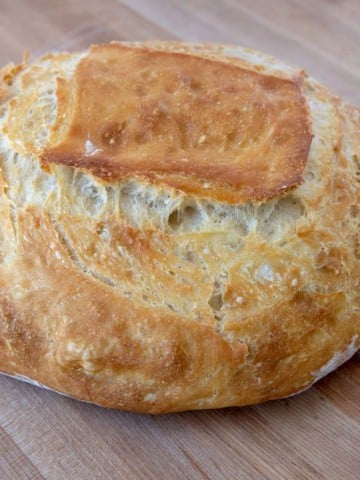
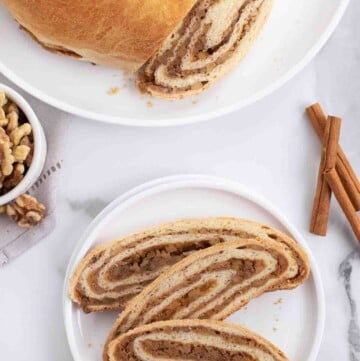
Chelle says
My friend’s is from Slovenia and has a very dangerous tree-nut allergy. She mentioned how she wished she could have potaca but can’t eat it at family gatherings. Is there a substitution I can use for the nuts?
Chef Dennis Littley says
I remember someone mentioning a version made with poppy seeds and raisins, but I don’t have a recipe for that.
cindy gauthier says
My great grandparents were some of the first Slovenians to come to this country, in the mid 1860’s. My great grandmother, grandmother and mother all made potica and I learned how to make it from my mother. There was never a recipe written down, just passed on by doing. It was made with white sugar instead of brown, did not have vanilla added, and the filling also had buttered bread crumbs in it. I went to Slovenia several years ago and found relatives. I was there for Easter and the potica they made tasted exactly like mine.
Chef Dennis Littley says
I like to remind my readers that there are as many recipes for dishes as their are grandmothers. Every family always has their own twist to the recipe.
Amy Howerton says
This was exciting to see here! I’ve been making your Tiramisu recipe for years and came back to look for others and found this. I grew up eating my Great Grandmother’s recipe that she grew up making in Ljubljana. Hers is made with honey though! Honey is a big deal in Slovenia. I unfortunately have to eat gluten free now -so I have to make an adapted version. Really cool to see Potica here though!
Kristi says
I am nervous about the eggs in the filling. They don’t end up like scrambled eggs in there? I have made variations of this bread in the past, but never with raw egg in the filling.
Chef Dennis Littley says
this recipe uses eggs in the filling. They won’t come out like scrambled eggs as long as you mix them into the other filling ingredients.
Maria says
I follow potica recipes from early 1950’s cookbooks that Slovenian women’s organizations published in Cleveland. None use whole eggs in the filling. You fold in stiffly beaten egg whites into the nut mixture. Different approach.
Happy Holidays!
Jim B says
Great recipe. I just made for the holiday and substituted egg nog for milk, and added about 2 tablespoons of honey in the filling.
Wow super moist and tasty
Chef Dennis Littley says
Thanks for letting me know the adjustments you made and that you enjoyed the potica! The eggnog sounds like an interesting addition.
Jvm says
My Dad is from Ljubljana. We had a pecan tree in our yard, so he used them instead of walnuts. Now we actually prefer pecans!
Chef Dennis Littley says
I love pecans, I bet it’s delicious with pecans
Jill Chernesky says
I believe my family is from Ljubljana.